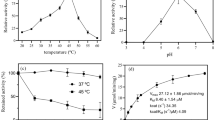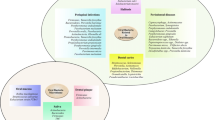Abstract
The effect of chlorhexidine (CHX) on the viability of Streptococcus sanguinis was investigated in a preclinical biofilm model separately on cells in the planktonic or attached life form. Saliva-coated human enamel and glass slides were exposed to the streptococci suspended in sterile saliva for 30 min and 60 min in the flow chamber system. The CHX exposition was performed in two parts: pretreatment of the planktonic bacteria before their attachment to enamel or glass, and treatment of bacteria already attached to enamel. The susceptibility measured by vitality percentages was determined by fluorescence microscopy using vital/dead cells. After CHX pretreatment of planktonic cells, the mean values of the vitality percentages after adhesion were 14–18% (enamel) and 24–25% (glass). In contrast, the mean vitality percentages of untreated attached streptococci reached 70–75% (enamel) and 68% (glass). The vitality percentages of CHX-exposed bacteria dropped markedly to 2–5%, whereas those of untreated attached cells remained at 65–66%. The exposure of initially attached streptococci to CHX resulted in greater reduction of bacterial viability than with the planktonic counterparts. This preclinical biofilm model allows the investigation of various bacterial life forms and can furthermore be used to select efficient antiplaque therapeutics which might be beneficial for clinical plaque control.

Similar content being viewed by others
References
Bos R, van der Mei HC, Busscher HJ (1996) Co-adhesion of oral microbial pairs under flow in the presence of saliva and lactose. J Dent Res 75:809–815
Brecx M (1997) Strategies and agents in supragingival chemical plaque control. Periodontol 2000 15:100–108
Brown MRW, Allison DG, Gilbert P (1988) Resistance of bacterial biofilms to antibiotics: a growth-related effect? J Antimicrob Chemother 22:777–780
Burgemeister S, Decker E-M, Weiger R, Brecx M (2001) Bactericidal effect of delmopinol on attached and planktonic Streptococcus sanguinis cells. Eur J Oral Sci 109:425–427
Buscher HJ, Doornbusch GI, van der Mei HC (1992) Adhesion of mutans streptococci to glass with and without a salivary coating as studied in a parallel-plate flow chamber. J Dent Res 71:491–500
Christersson CE, Glantz POJ (1992) Retention of streptococci to defined solid surfaces in the presence of saliva secretions. Scand J Dent Res 100:98–103
Christersson OCE, Dunford RG, Glantz P-OJ, Baier RE (1989) Effect of critical surface tension on retention of oral microorganisms. Scand J Dent Res 97:247–256
Costerton JW, Cheng KJ, Geesey GG, Ladd TI, Nickel JC, Dasgupta M, Marie TJ (1987) Bacterial biofilms in nature and disease. Annu Rev Microbiol 41:435–464
Decker E-M (2001) The ability of direct fluorescence-based, two-colour assays to detect different physiological states of oral streptococci. Lett Appl Microbiol 33:188–192
Emilson CG (1977) Susceptibility of various microorganisms to chlorhexidine. Scand J Dent Res 85:255–265
Emilson CG (1994) Potential efficacy of chlorhexidine against mutans streptococci and human dental caries. J Dent Res 73:682–691
Gibbons, RJ, van Houte J (1980) Bacterial adherence and the formation of dental plaques. In: Beachey EH (ed) Bacterial adherence. Receptors and recognition, series B, vol. 6. Chapman and Hall, London, pp 62–104
Guggenheim B, Giertsen E, Schüpbach P, Shapiro S (2001) Validation of an in vitro biofilm model of supragingival plaque. J Dent Res 80:363–370
Hafström-Bjorkman U, Sundström F, Ten Bosch JJ (1991) Fluorescence in dissolved fractions of human enamel. Acta Odontol Scand 49:133–138
Jenkins S, Addy M, Wade W (1988) The mechanism of action of chlorhexidine. A study of plaque growth on enamel inserts in vivo. J Clin Periodontol 15:415–424
Kinniment SL, Wimpenny JWT, Adams D, Marsh PD (1996) Development of a steady-state oral microbial biofilm community using the constant-depth film fermenter. Microbiology 142:631–638
Lang NP, Brecx M (1986) Chlorhexidine digluconate—an agent for chemical plaque control and prevention of gingival inflammation. J Periodont Res 21 [Suppl 16]:74–89
Larsen T, Fiehn N-E (1995) Development of a flow method for susceptibility testing of oral biofilms in vitro. APMIS 103:339–344
Larsen T, Fiehn N-E (1996) Resistance of Streptococcus biofilms to antimicrobial agents. APMIS 104:280–284
Li YH, Bowden GH (1994) Characteristics of accumulation of oral gram-positive bacteria on mucin-conditioned glass surfaces in a model system. Oral Microbiol Immunol 9:1-11
Millwardt, Wilson M (1988) The effect of chlorhexidine on Streptococcus sanguis biofilms. Microbiology 58:155–164
Pratten J, Smith AW, Wilson M (1998) Response of single species biofilms and microcosm dental plaques to pulsing with chlorhexidine. J Antimicrob Chemother 42:453–459
Pratt-Terpstra IH, Weerkamp AH, Busscher HJ (1989) The effects of pellicle formation on streptococcal adhesion to human enamel and artificial substrata with various surface free-energies. J Dent Res 68:463–467
Quirynen OM, Bollen CML (1995) The influence of surface roughness and surface-free energy on supra- and subgingival plaque formation in man. J Clin Periodontol 22:1-14
Rølla G, Löe H, Schiött CR (1971) Retention of chlorhexidine in the human oral cavity. Arch Oral Biol 16:1109–1116
Rudney JD, Staikov RK (2002) Simultaneous measurement of the viability, aggregation, and live and dead adherence of Streptococcus crista, Streptococcus mutans and Actinobacillus actinomycetemcomitans in human saliva in relation to indices of caries, dental plaque and periodontal disease. Arch Oral Biol 47:347–359
Sweet SP, MacFarlane T, Samaranayake LP (1990) An in vitro method to study the adherence of bacteria to saliva-treated tooth enamel sections. Oral Microbiol Immunol 5:24–28
Trüper HG, DE Clari, F (1997) Taxonomic note: necessary correction of specific epithets formed as substantives (nouns) "in apposition". Int J Syst Bacteriol 47:908–909
Weiger R, Decker E-M, Krastl G, Brecx M (1999) Deposition and retention of vital and dead Streptococcus sanguinis cells on glass surfaces in a flow-chamber system. Arch Oral Biol 44:621–628
Weiger R, Von Ohle C, Decker E, Axmann-Krcmar D, Netuschil L (1997) Vital microorganisms in early supragingival dental plaque and in stimulated human saliva. J Periodont Res 32:233–240
Willems G, Lambrechts P, Braim M, Vuylsteke-Wauters M, Vanherle G (1991) The surface roughness of enamel-to-enamel contact areas compared with the intrinsic roughness of dental resin composites. J Dent Res 70:1299–1305
Wilson M, Patel H, Fletcher J (1996) Susceptibility of biofilms of Streptococcus sanguis to chlorhexidine gluconate and cetylpyridinium chloride. Oral Microbiol Immunol 11:188–192
Wilson M, Patel H, Noar JH (1998) Effect of chlorhexidine on multi-species biofilms. Curr Microbiol 36:13–18
Zaura-Arite E, van Marle J, ten Cate JM (2001) Confocal microscopy study of undisturbed and chlorhexidine-treated dental biofilm. J Dent Res 80:1436–1440
Acknowledgement
This study was supported by GABA International, Basel, Switzerland.
Author information
Authors and Affiliations
Corresponding author
Rights and permissions
About this article
Cite this article
Decker, EM., Weiger, R., von Ohle, C. et al. Susceptibility of planktonic versus attached Streptococcus sanguinis cells to chlorhexidine. Clin Oral Invest 7, 98–102 (2003). https://doi.org/10.1007/s00784-003-0202-y
Received:
Accepted:
Published:
Issue Date:
DOI: https://doi.org/10.1007/s00784-003-0202-y




